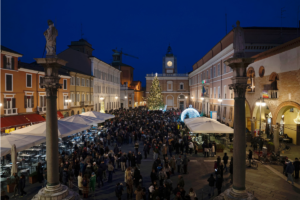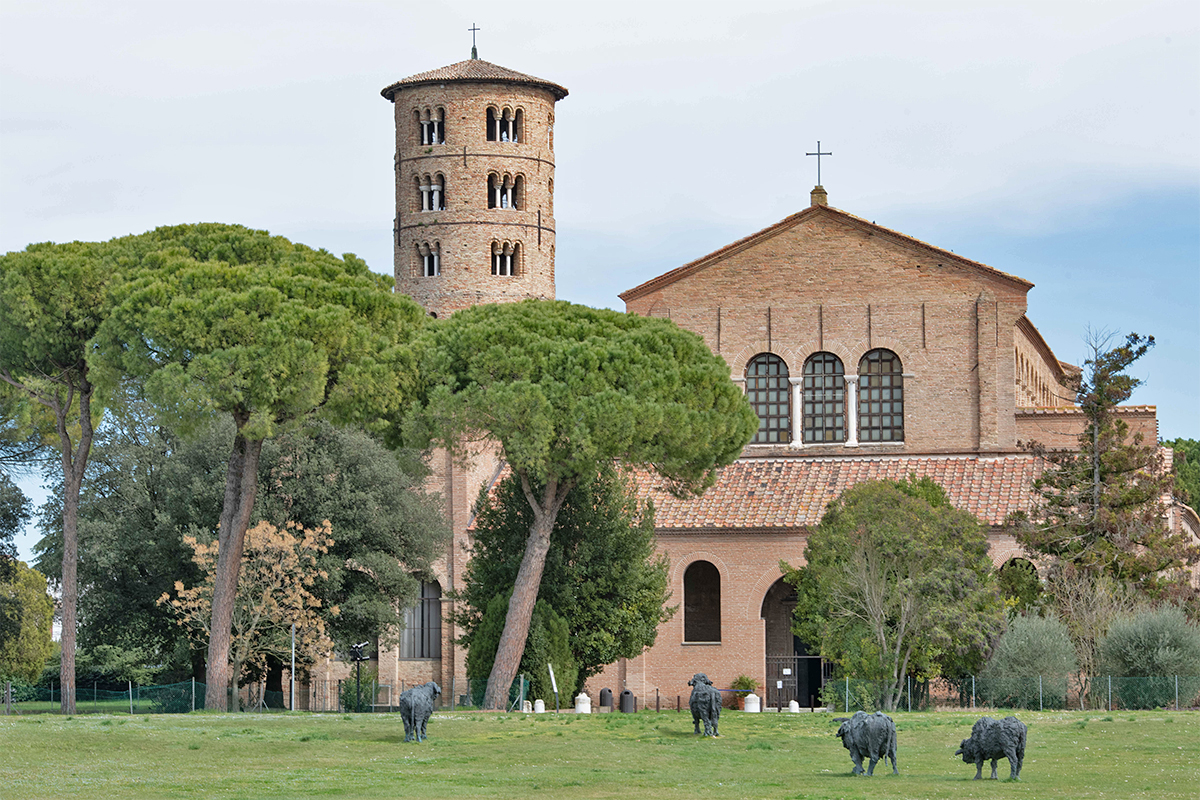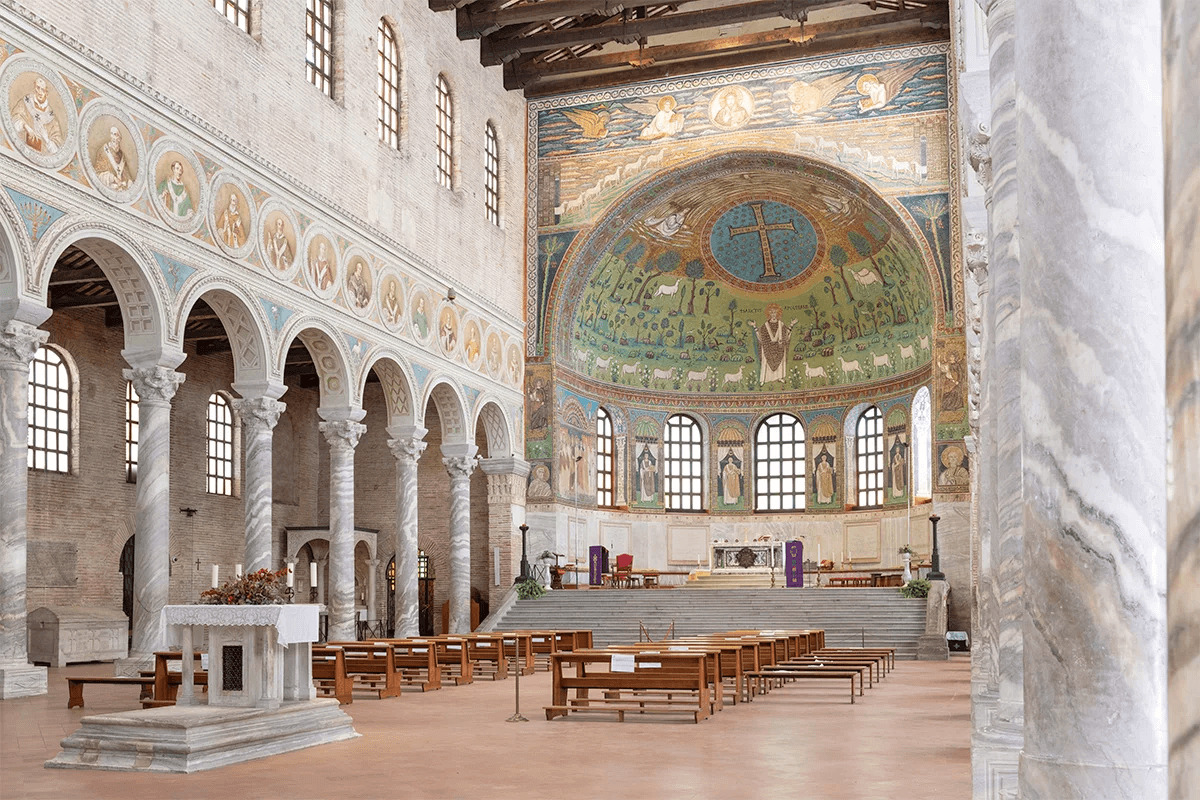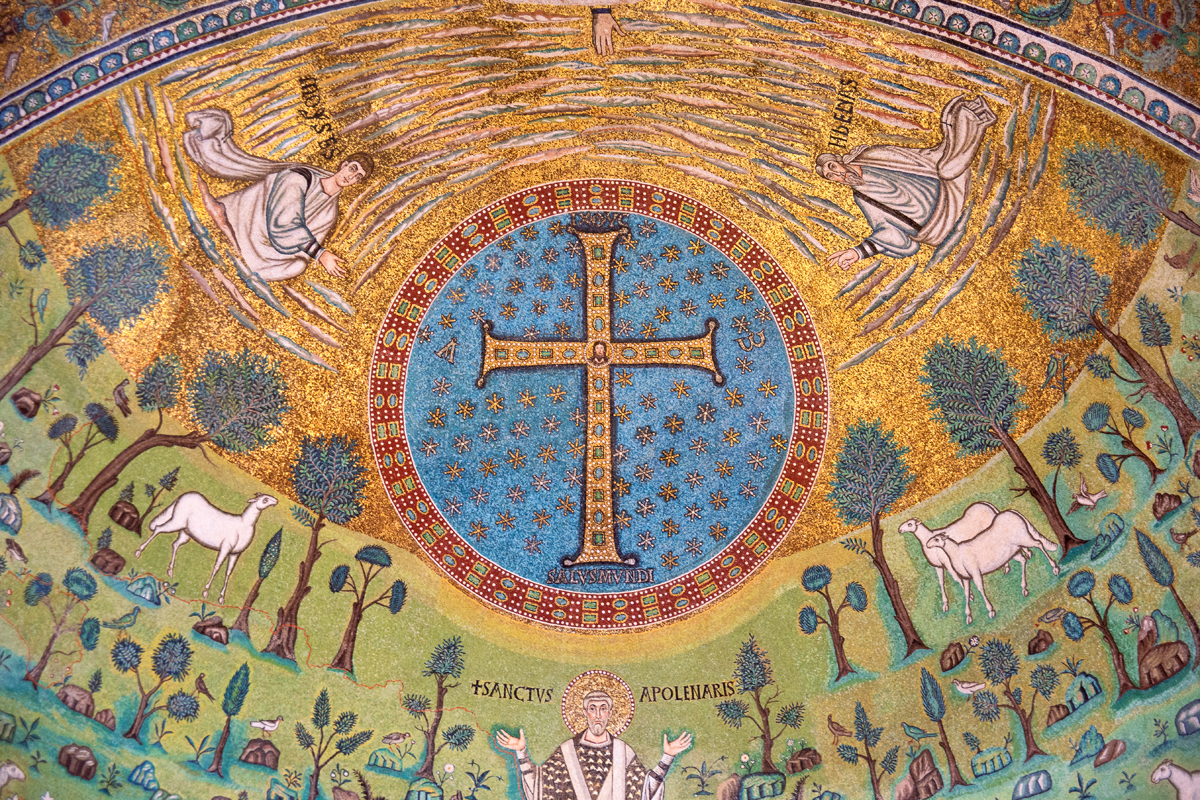Just on the border of the little town of Classe, 8 km south of Ravenna, one of the eight monuments composing the city’s Unesco site stands out – it’s the grandiose and solemn BASILICA OF SANT’APOLLINARE IN CLASSE with its characteristic cylindrical bell tower, UNESCO World Heritage Monument since 1996.
Built to house the remains of the patron St. Apollinaris, the basilica was raised over a cemetarial area. The cemetery was in use between the end of the 2nd and the beginning of the 3rd century — and the protobishop Apollinaris himself was supposedly buried here.
The Basilica of Sant’Apollinare in Classe was financed by Giuliano Argentario, on behest of Bishop Ursicino (533 – 536 AD). However, it was consecrated only a few years later (549 AD), under the archbishopric of Massimiano.
Imposing and majestic, with a 30 metre-high façade and almost twice as long, it has been defined the greatest basilica of the Early Christian period known today.
Apollinaris and his mosaics
Despite the plunderings endured over the centuries (originally it was preceded by a four-arched portico, then gone lost), the church still preserves the beauty of the original structure.
The basilica, though, is known above all for the magnificent polychrome mosaics in the apse and the ancient marble sarcophagi placed along the naves.
It is also possible to admire the depiction of Apollinaris, founder and first bishop of the church of Ravenna, displayed with raised arms in the age-old gesture of prayer.
In this intensely symbolic context, every element is full of significance, such as the twelve white lambs immersed in a green landscape, symbol of the twelve apostles.
The mosaics depict a variety of plants, rocks and birds, some of which are indigenous to the area. The mosaic then honours some important personalities of the Church of Ravenna.
Above the paradisiacal landscape with Apollinaris, on a golden background, the hand of God emerges from the white clouds. Under this, a cross studded with gemstones stands out on a blue sky dotted with 99 golden and silver stars.
Inside the cross, the face of Christ and the apocalyptic letters of the Greek alphabet – the Alpha and the Omega — the Beginning and the End of all things.
Alongside, Moses and Elijah emerge from the clouds, while, just below, three sheeps symbolize the apostles witnessing the Transfiguration.









